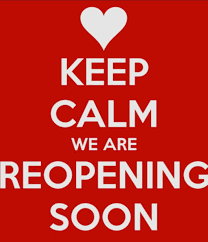From Citiwire.net:
By Sam Newberg
Tactical urbanism is blossoming in the United States, bringing the opportunity to change how we look at our neighborhoods and cities, and most important, how we improve them.
In early June, on a high-traffic street in St. Paul, Minn., Andrew Howard and Team Better Block tried some tactical urbanism to help show people see just how cool the street could be.
They narrowed a busy part of East 7th Street in the Dayton’s Bluff neighborhood by closing a lane in each direction and putting in potted plants, trees and a bike rack.

Photo Credit: Sam Newberg
They painted in a temporary crosswalk in a spot where neighbors though one was needed.

Photo Credit: Sam Newberg
They set up a playground, art booths, food stands and even a piano in the street.

Photo Credit: Sam Newberg
They placed images and information in vacant storefront windows to help people imagine how that space could be used, especially if the street outside was more pleasant.
Tactical urbanism is a local, grassroots effort that takes a place with having high commercial vacancy and/or fast-moving traffic (and Dayton’s Bluff grapples with both problems) and installs temporary trees, crosswalks, bike lanes, sidewalk seating and temporary uses for vacant storefronts. Essentially, it’s an effort to inspire neighbors to take back their street, to imagine how great the neighborhood can be when people gather and have a little fun. It’s a fairly low-cost way to demonstrate, temporarily, the potential for long-term change.
The events are great, but how can they inspire long-term change?
In a number of ways. People of all ages who attend can leave with a different perspective on how public space can be used. They can get involved, perhaps, by hosting another event, attending a neighborhood meeting and taking part in long-range planning for the area. Or they could lobby public officials for permanent traffic calming or crosswalks.
Elected officials might attend and note what onerous or obsolete regulations might be changed, to allow safer streets or to make it easier to open small businesses. Maybe someone needing a space for a business would be inspired by seeing a use for a vacant space and decide to lease or buy a building. Holding the event in a public space and letting people touch, feel, hear, smell and experience the potential of that place can inspire more change than a hundred public meetings in an indoor community room.
Team Better Block’s co-founder, Andrew Howard, has learned much from tactical urbanism events, and he put that experience to use in St. Paul. His advice:
- Set a date and advertise it.
- Hold meetings on-site so people can get a feel for the place before the event.
- Measure the changes that result. Measure how fast traffic moves, where people are sitting, how long they linger (even if you catch someone sneaking a kiss) and decibel levels. This is important. This lets you “prove” how well the changes work. Measuring can also expose what doesn’t work, which is as important as what does.
- Don’t let it end with just one event. Follow up with 30-, 60-, and 120-day goals to touch up paint, hold a second event or see whether real estate changed hands or was leased as a result.
Other tactical urbanists, like Mike Lydon of The Street Plans Collaborative spoke recently to the Congress for the New Urbanism’s conference, CNU 21 in Salt Lake City. Lyndon emphasized how short-term tactical urbanism events can inspire long-term changes or can catalyze plans that have been languishing.
Lydon pointed to a 1969 plan for pedestrian improvements on Broadway in New York City. They sat on a shelf until 2009, when a tactical urbanism event closed the street in Times Square so people could bring folding chairs and hang out. The result: permanent changes to Broadway. That test run was needed, to let people experience how the street could be used.
Streetsblog founder (and occasional Citiwire author Aaron Naparstek was emphatic about tactical urbanism’s ability to make change. Elected officials at all levels don’t care so much about “chair bombing” as a tool, but they do care about the community it creates and the people who can spark change in their neighborhoods. Don’t downplay the political aspect of this, Naparstek implores. Most of all, Andrew Howard says, make sure it is fun. People love reclaiming their streets.

Photo Credit: Sam Newberg
Tactical urbanism has already made significant small-scale changes in many cities. But perhaps what I like most is its ability to let children play in the street. In and of itself, that is such a simple, elegant and wonderful thing to watch it makes me weep.
Having been to countless public planning meetings, I appreciate that tactical urbanism not only ignores “why?” in favor of “why not?” but that it shows you “Why not?” in a tangible way. Sure, a lot of work can be required to make long-term change in how we use our urban places, but tactical urbanism shows how simple the solution can be if we just do it. So bring it on. Why not?
Sam Newberg is a Twin Cities-based writer and real estate consultant who writes as Joe Urban. Reach him at sam@joe-urban.com. A version of this article first appeared at www.streets.mn.



